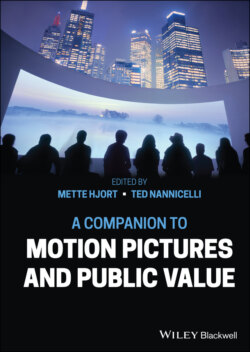Читать книгу A Companion to Motion Pictures and Public Value - Группа авторов - Страница 46
Two Problems with Mediated Appreciation
ОглавлениеWhence, then, this hostility toward mediated appreciation of nature? I think we can identify two major concerns that might underlie it.
The quotation from Carlson, presented above, suggests the first. His critique of photographs and landscape paintings is based on the fact that, being so different from natural environments, they are simply unable to present enough of the relevant properties of those environments. A static, two-dimensional representation of a forest cannot present to us qualities such as the scent of pine trees, the forest’s changing appearance as the light wanes, the feel of the wind, and so on, all of which are very much relevant to that environment’s aesthetic value. In short, a photo of an environment, such as a forest, just could not have a significant degree of appreciative aptness, any more than, say, an audio recording of a dance performance could. The problem is not with how well the representation has been done; rather the problem lies in the inherent limitations of the medium itself. Call this the “Poverty of Representation” objection to mediated nature appreciation.
A second worry about mediated appreciation can also be extracted from Carlson’s writing about photography. Expanding on the differences between natural environments and photographs, he notes that the appreciation of photographs tends to involve formal and compositional qualities of the two-dimensional image, qualities such as balance, symmetry, and so on. Consider Ansel Adams’ famous photograph Moon and Half-Dome (1960): the image has been carefully composed so as to include a balance between the bright and dark regions, and a central framing of the Moon between the two peaks (King 1992, 262). For a more recent example, consider Max Waugh’s prize-winning photograph of a bison in Yellowstone National Park, Snow Exposure (Figure 3.1). The animal is perfectly centered and Waugh employed a long exposure time to give the falling snow a rope like quality, echoing nicely the texture of the bison’s fur, producing what is almost a “negative image” of the animal.8
Figure 3.1 Snow Exposure (2018), (photo by Max Waugh courtesy of the photographer).
Such formal, compositional properties make for a striking photograph; however, one could argue that they have little to do with the natural object that is represented in the photograph. The problem here is not our previous problem—that photographic representations are incapable of presenting certain properties of their subject matter. Rather, the problem here is that what is appreciated via the representation is not the subject at all, but something else—namely, the composed photographic image. Call this the “Appreciative Shift” objection to mediated nature appreciation.9
The Appreciative Shift objection is easily extended to landscape painting, where the artistic element of compositional choice is, if anything, even more pronounced. If we look at the typical process whereby an artist starts from a sketch done on site and later produces a landscape painting in the studio, we can see how specific compositional choices shape the final image. And we can further extend the objection by noting that the artistic element of photographs and paintings includes not only compositional, formal qualities, such as balance, symmetry and so on, but also expressive qualities. Some painters—Van Gogh furnishes the paradigm example—aimed above all to lend the landscape a certain “quality of feeling” in their representations of it.10 In such cases, the viewer’s focus shifts from the landscape itself to an emotional or expressive quality that the artist has projected onto it.
Neither of these worries about mediated nature appreciation—the Poverty of Representation objection or the Appreciative Shift objection—is misconceived. Each points to a genuine concern about the feasibility of certain forms of mediated nature appreciation. Furthermore, there have been particular practices of nature appreciation for which these objections are highly relevant. The Picturesque tradition of landscape appreciation, to cite the most notorious example, was practically based on the idea of an appreciative shift, wherein direct perception of the landscape itself was replaced by the appreciation of a “better composed” image, either in landscape paintings or devices such as the Claude mirror.11 Although the Picturesque has faded, its spirit lives on in digital photography practices such as the use of filters that allow easy manipulation of colors and detail to adjust an image’s “emotional tone”. Also, the practice of assessing the “scenic quality” of landscape by quantifying the formal features of photographs has been, and remains, an influential technique in much empirical landscape assessment.12 Much philosophical skittishness about mediated nature appreciation is no doubt a reaction to the highly problematic aspects of these appreciative practices.
There are, then, genuine concerns about mediated appreciation of nature in general, concerns that may account for the ongoing neglect of nature film. It is important to note, however, that these concerns arose not from any direct consideration of film itself, but primarily from discussions of photography and landscape painting. In this sense, the neglect of film has been, I think, something of an unintended effect, and a very unfortunate one at that, because a consideration of film offers us, I shall now argue, our best way of responding to these very concerns.
